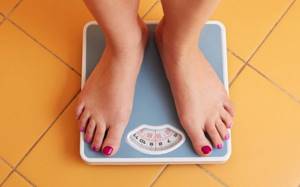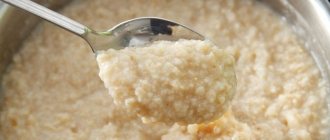Health
Weight loss
Want to know your metabolic rate ? It's very simple: there are at least 3 proven methods that will clearly outline the state of your body. Each test can be done at home as often as you like.
Why is it important to know your metabolic rate? This indicator directly determines how quickly you will be able to lose weight and whether it is worth going on a diet at all (perhaps this is strictly contraindicated for you). Check right now to see if your metabolism is getting lazy.
Test No. 1. On oatmeal
To test this, cook a portion of oatmeal in water (200–250 g). Take the flakes for long cooking. Minute porridge in bags is not suitable: after processing, there is little useful fiber left in it, but harmful starch has been added.
It is also important to cook the oatmeal empty - without sugar, butter, salt, berries or jam. The porridge should be warm.
Eat the steamed cereal on an empty stomach, chewing thoroughly. After 10–15 minutes, listen to your body and evaluate the sensations.
What affects the speed of PBM
Since the body is a closed, well-coordinated and autonomous system, any internal or external factor can instantly affect its activity and life support. Consequently, when changing body position, as well as all types of movements, basal metabolism increases in order not only to support the functioning of the body with the proper level of energy, but also to ensure its physical activity.
This increases your metabolic rate. This is due to the fact that the musculoskeletal system, which accounts for up to 40% of body weight, takes over the share of energy, consuming it in large quantities. A significant portion is spent on muscular activity, so ultimately adding muscle mass helps increase BMR.
At the same time, there are factors that can actively influence these processes. Among them:
- gender of the individual;
- physiological age of a person;
- level of thyroid function.
Test No. 2. Weight control

- Weigh yourself before bed. 2-3 hours before, do not eat, drink or exercise anything. Write down the result, labeling it A.
- Re-weigh immediately after waking up, mark the weight with the letter B.
- Subtract A from B. If the difference is 500 g , this indicates normal metabolism. If the indicator is less than normal or equal to zero (A equals B), your metabolism is slow.
Basal Metabolic Rate in Humans
Basal Metabolic Rate, also called metabolic rate, for children and adults describes the amount of energy that the human body consumes daily to maintain its functions, on an empty stomach and without any physical effort - at an ambient temperature of 20 ° Celsius - and at complete rest . The human body burns calories in any case - even if it is at rest. This means: To maintain body functions, calories are burned on their own without human action. The body requires a certain amount of calories: the only way to maintain basic body functions is breathing, metabolism, and blood circulation. So if you don't eat enough, you risk your body shutting down. Basal metabolic rate plays a very important role in meeting a person's energy needs. In addition, there is a second type of energy consumption. It is essentially determined by physical activity. In adults, the metabolic rate during light exercise reaches between 60 and 70 percent - based on total energy required. In addition, you can increase your basal metabolism - easily and simply.
There are 2 types of calorie requirements: One depends on weight and height, and the other depends on age, gender and body type. Take the weight and height of a person, as they increase, the metabolism also increases in order to regulate body temperature. Gender also plays an important role: Men have a higher BMR than women. The reason for this is the greater amount of muscle mass in the so-called stronger sex. Age differences also arise in relation to BSM: Young people have higher BSM than older people. Muscle mass decreases with age and metabolism slows, causing basal metabolic rate to drop in older people. From age 30, the BMR decline is expected to be about three percent per decade of life. And ultimately, you should never neglect body composition. Generally speaking, the greater the muscle mass, the higher the BMR. The explanation is quite simple. The metabolism of muscle tissue is much more intense than that of adipose tissue. Additionally, different organs have different effects on BSM: While the liver's share is an impressive 26 percent, the kidneys have only 7 percent. The brain is in the middle, and makes up about 18 percent.
The relationship between basal metabolic rate and obesity is always interesting. It is not the total weight that is critical for metabolism, but rather the proportion of biologically active tissue. Definitely: the proportion of metabolically active tissue is higher in people with normal weight than in obese people. This also explains why overweight people have a slightly lower basal metabolic rate than normal-weight people.
Using the following simple formulas you can determine your basal metabolic rate:
for men - 1 kcal per 1 kg of body weight per hour, for women - 0.9 kcal per 1 kg of body weight per hour.
Calculation of basal metabolic rate based on body surface area is considered more accurate:
In men - 915 kcal of basal metabolism per square meter of body surface, in women - 834 kcal of basal metabolism per square meter of body surface.
Special circumstances also have an impact on basal metabolism. These include diets, as well as living in a tropical climate, pregnancy, and fever. Particularly interesting in this context: Intensive fasting in the form of radical diets with less than 1200 kcal per day reduces the effect of basal metabolism from 10 to 40 percent. The body must activate the defense function here, which is the Afterburner, to reduce caloric intake in order to effectively counteract any fasting.
What types are there?
It is immediately worth noting that there is no one specific diet that would be suitable for every person. Everyone should choose their own rules for losing weight, taking into account the characteristics of the body. And in order to create your own diet, it is important to know your metabolic type.
How to understand “metabolic type”. This is a determination of how exactly the body processes proteins, fats and carbohydrates. After the incoming substances are processed, the resulting calories will be converted into energy. This process is called oxidation or in other words oxidation. Thus, carbohydrates, after being processed in the form of glucose, enter the blood. The pancreas receives a signal that insulin production is necessary. It helps clear the blood of sugar that has not been used as energy by the body. It is transported into cells to be stored as fat.
Each body oxidizes nutrients in its own way, which is why it is impossible to single out one diet that would help everyone. There are only three groups of oxidizing agents:
- Fast oxidizers.
- Slow oxidizers.
- Balanced oxidizing agents.

Fast ones burn nutrients very quickly. Accordingly, incoming glucose will quickly enter the blood. This entails the release of insulin, which prevents fat gain. The higher the amount of carbohydrates in food, the more energy the body will receive. But this is provided that the person moves and receives a load. Otherwise, all the energy will be stored in the form of adipose tissue.
Fast oxidizers should be consumed with sufficient protein and fat. This reduces the rate of insulin oxidation and release. Due to this, blood sugar levels and energy production will be stabilized.
Differences between UBM and SMP?
UBM often confused with SMP . We are talking about a very similar designation for basal metabolism , but still, they differ . BMR only involves basic processes , such as breathing, blood flow, and resting temperature regulation. MMR is your resting metabolic rate and measures the same processes as BMR, but increases them by measuring everyday movements such as putting on clothes or brushing your teeth. Resting metabolic rate is measured in the morning before a meal or before exercise and after a full night of restful sleep. [1]
The concepts of SMP and UBM are very similar . Your resting metabolic rate should be an accurate estimate of your basal metabolic rate. Because these two concepts are similar, most nutritionists use these terms to describe the same things. Using the concept of “resting metabolic rate”. [5] [6]

How to measure BMR?
Accurate laboratory measurement of BMR requires that the nervous system be inactive , which means that the person must be in a state of complete rest . The simplest way to calculate BMR is to use formulas generated from statistical data.
There are 3 types of formulas. The first is the Harris-Benedict Formula , developed in 1984 and used until 1990. the Mifflin-St. Geor formula was introduced . It turned out to be more accurate, and therefore was used as the best formula for calculating the BMR and is used in special calculators.
the Kutch-McArdle formula was developed , which differs from other formulas only in that it calculates resting energy expenditure (RDEE), also taking into account muscle mass. This formula is more suitable for those who want to increase muscle mass and know their body fat percentage. [6]

Calculate BMR using three different formulas, conditions:
- W is body weight in kg
- H height in cm
- A age
- F percentage of body fat [5]
1. Updated Harris-Benedict equation:
For men: BMR = 13.397 x W + 4.799 x H – 5.667 x A + 88.362
For women: BMR = 9.247 x W + 3.098 x H – 4.330 x A + 447.593 [3]
2. The Mifflin-San Geor formula is the most popular formula for UBM calculators:
For men: BMR = 10 x W + 6.25 x H – 5 x A + 5
For women: BMR = 10 x W + 6.25 x H – 5 x A – 161
3. Kutch-McArdle formula:
BMR = 370 + 21.6 (1 – F) x W

How many calories do you need to take in daily?
The first step in calculating the number of calories is calculating the BMR using any of the three methods presented. The second step is to multiply the final BMR number by the physical activity coefficient , which has 5 types:
- passive type - if you have minimal or no physical activity, multiply your BMR by a factor of 1.2.
- minimally active type - if you train 1-3 times a week, multiply your BMR by a factor of 1.375.
- moderately active type - if you train 3-5 times a week, multiply your BMR by a factor of 1.55.
- active type - if you train 5-6 times a week, multiply your BMR by a factor of 1.725.
- overly active type - if you are a professional athlete or train 6-7 times a week or have a physically demanding job, multiply your BMR by a factor of 1.9. [2]
The resulting number represents your energy requirement, and the number of calories you need each day to maintain your weight. If you want to lose weight , you need to take in fewer calories and vice versa, if you want to gain weight , you need to take in more calories . [2]











